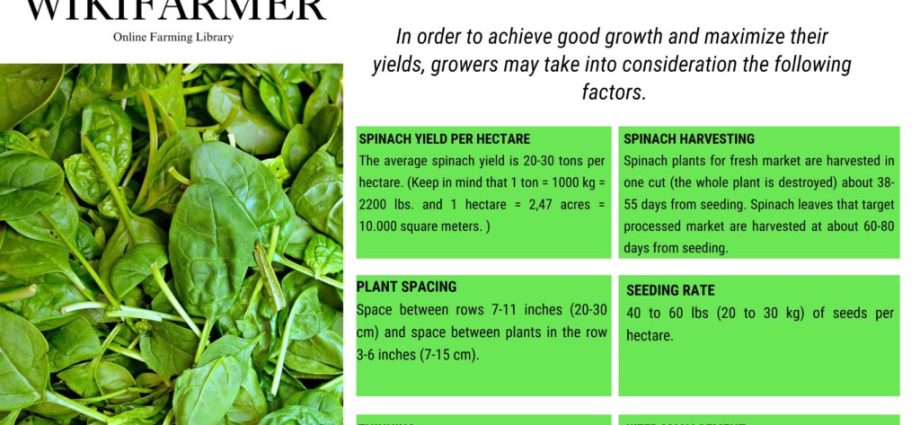Contents
Spinach is an extremely healthy and low-calorie vegetable crop. In recent years, when healthy eating has become of great importance, the questions are: how to plant spinach in the garden, or how to grow spinach on the windowsill? have become extremely relevant. Plants are not too demanding on the conditions, so their cultivation and subsequent care for them do not present any difficulties. In the warm season, juicy vitamin greens can be planted in the garden, and in winter, spinach grows successfully on the balcony of the house.
Landing
Before planting spinach, you need to prepare the soil. The ripening of spinach greens occurs quite quickly, therefore, the fertilizers used to feed it must be fast-acting. In early spring, it is recommended to scatter granular urea over the snow. Later, before sowing the seeds in the ground, you need to add a little humus. It should be remembered that spinach leaves accumulate nitrates well, so nitrogen fertilizers should not be applied in spring.
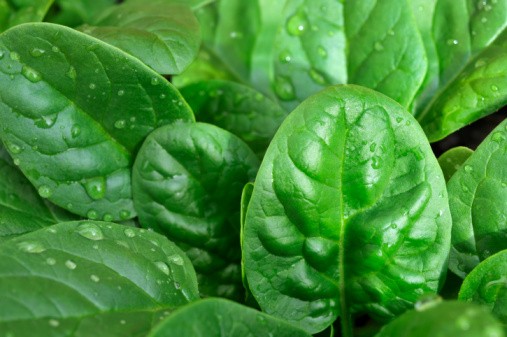
It is more correct to prepare the soil for growing spinach in the fall, then there is no need for spring fertilizing with nitrogen. The area where the crop is planned to be planted must be dug up and a full range of organic and mineral fertilizers introduced into the soil: compost, humus, a phosphorus-potassium mixture, as a rule, complex mixtures always contain a certain amount of nitrogen. Then in the spring it remains only to loosen the earth in the garden, and you can sow spinach.
Cultivation of culture is more successful in loose nutrient soil. Good air and moisture permeability is the main condition for the active growth of greenery. The best option is sandy soil with neutral acidity. In heavy, clayey, crusty soil, spinach should not be planted, as this will require more careful care of the plants, and the likelihood of a good harvest is very low.
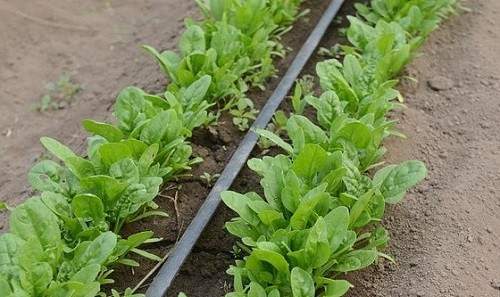
Next, you need to take care of the preparation of the seed. Spinach seeds have a fairly dense shell, so it is recommended to soak them in warm water for a day, then place them in a solution of potassium permanganate for several hours, and only after that they can be planted in open ground. There are some varieties of spinach, such as New Zealand, Victoria, Corenta, whose seeds do not have fast germination – soaking for these varieties requires a longer time (up to 2 days), and with the use of biostimulants.
Planting a plant in open ground can be carried out both from seeds and from seedlings. However, the seedling method is less popular, since young plants have weak roots and take root very poorly in the ground. It is reasonable to sow only heat-loving varieties (Matador, New Zealand) for seedlings, which are undesirable to plant directly into the soil in early spring.
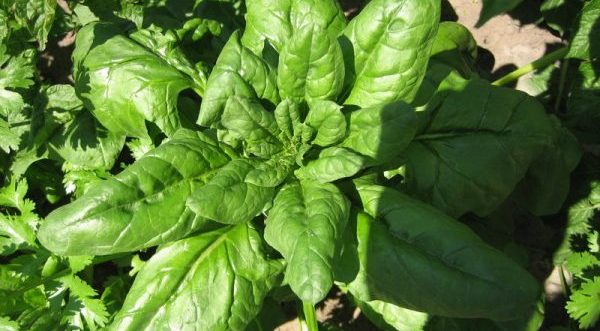
In order to plant seeds in the country in open ground, you need to make shallow furrows of any length in the prepared soil at a distance of 15-20 cm from each other. Next, pour water over the rows and sow seeds in them, planting no more than 1,5-2 cm into the soil. Spinach is quite cold-resistant, but if planting is done in early spring, it is better to play it safe and cover the bed in the garden with a film – this will not only protect the seeds from cold, but also accelerate their germination. From properly prepared seeds, seedlings appear in 5-7 days.
City residents, as well as gourmets who want to get vitamin greens all year round, are more interested in the question: how to grow spinach on the windowsill of your own home, and what should be the care of the plants? Growing greenery at home on a balcony or windowsill is no more difficult than planting it in the country. First you need to prepare a container and soil mixture.
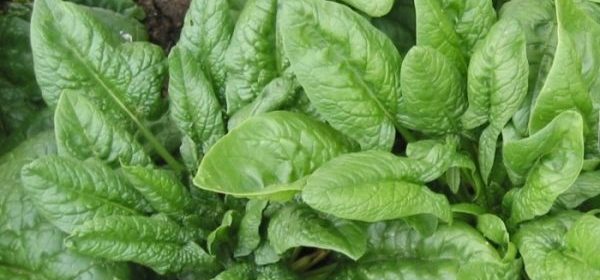
At home, you can plant spinach with seeds in a regular 1 liter flower pot, or a plastic container with holes at the bottom, from which you can later dive plants into a separate container. At the bottom of the pot (container) it is imperative to lay a layer of drainage, since spinach loves moisture very much, but stagnant water is harmful to it.
The soil mixture for growing a crop at home can be prepared from 1 part of sand, 2 parts of turf and the same amount of humus, or use a substrate consisting of 1 part of biohumus and 2 parts of coconut fiber. Planting seeds is carried out at a depth of 1,5-2 cm, the container is covered with a film or glass until germination. At home, as a rule, the air is too dry and very warm, and plants need a temperature of 15-17 ° C for normal growth, so you should take care of creating such conditions in advance.
Video “All about growing spinach”
Demonstration video with tips and information on growing spinach.
Peculiarities of growing
Spinach does not require any special care and conditions, since it is an early ripening and rather unpretentious crop, however, there are some points and features, considering which you can make the cultivation of useful greens more successful and high-yielding:
- potatoes, radishes, legumes, cucumbers, zucchini, tomatoes are considered the best predecessors of spinach, in addition, you should not plant a crop for more than 3 years in one place;
- the plot for growing crops should be open sunny (experienced gardeners recommend planting spinach on a slight hill), but in hot summers the plant feels good even in partial shade;
- spinach vegetation lasts no more than 2 months – in order to have healthy greens throughout the season, it is recommended to plant seeds in the country in several stages with an interval of 2 weeks;

- you can plant a crop in open ground not only in spring, but also in autumn – if the seeds are sown in late August – September, then fresh greens will appear in early spring, and the overwintered seeds will become stronger and the harvest from them will be of better quality;
- plants do not grow well in acidic soil – acidity can be reduced by adding lime, chalk, dolomite flour;
- to prolong the growing season of spinach, experienced gardeners recommend cutting off the tops of the shoots of adult plants – this contributes to the formation of new leaves and prevents the appearance of arrows with peduncles.
It should also be borne in mind that the cultivation of each variety of spinach has its own characteristics. Usually there are no problems with early ripening varieties, such as Gigantic, Godri, and the now popular hybrid Matador also grows well. But, for example, New Zealand spinach is more demanding on conditions. Firstly, the planting of the New Zealand variety in open ground should be carried out only from seedlings, since the culture is very thermophilic. Secondly, the seeds of this variety germinate very poorly, and one cannot do without a growth stimulator.
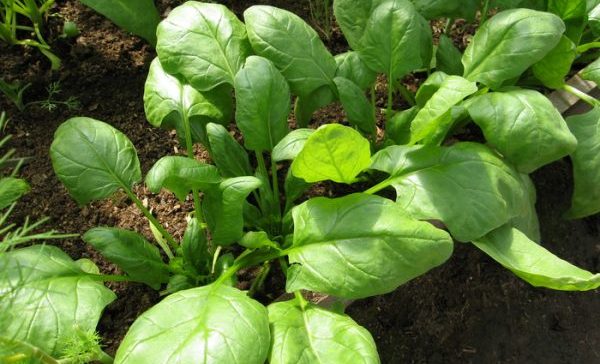
However, beloved by many, New Zealand spinach also has certain advantages: due to its lush greenery, adult plants suppress the growth of weeds, so they practically do not need weeding, and besides this, the New Zealand variety does not bloom and does not shoot arrows during a drought, as is typical of other species. Growing culture at home also has its own characteristics. If the seeds are planted in winter, then it is likely that the plants will not have enough sunlight and additional illumination will be required. Considering the fact that in apartment conditions it is almost always warm and dry, and spinach is a moisture-loving plant, you need to constantly monitor soil moisture and regularly spray the foliage.
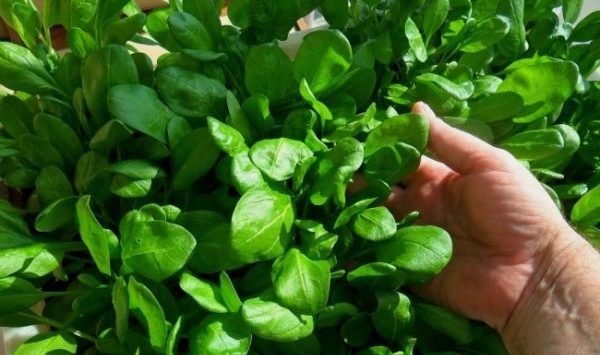
Care
Care for spinach in the open field consists in timely weeding and watering. The first weeding is carried out as soon as the first two leaves appear on the plants – during this period, the bed should be thinned out, leaving the strongest shoots at a distance of 10-15 cm. At the same time, weeds should be removed and the aisles should be loosened. Further care of the culture includes another 3-4 weeding.
You need to water the bed often, since drought leads to the stalking of the bushes and the cessation of the growth of green mass, but the plants should not be flooded. Spinach is fertilized only if it grows in depleted soil – fertilizers applied during soil cultivation are sufficient for fertile soil. Spinach greens, which are grown at home in a pot, require the most minimal care: regular watering, loosening, and spraying foliage. Houseplants need plenty of daylight, but the humidity needs to be high enough.
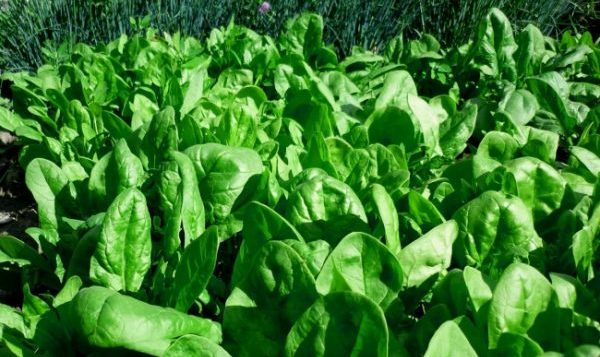
Spinach rarely gets sick, but the appearance of powdery mildew and rot on the leaves is not excluded. In this case, care consists in removing diseased plants from the garden, since it is undesirable to use chemical agents for the culture.
Harvesting
They begin to collect spinach when 5-8 leaves grow in the outlet. For each variety, this period begins at different times: early ripening varieties (Godry, Giant) ripen in 18-25 days from the date of sowing, late and mid-ripening varieties (Victoria, New Zealand) are ready for harvesting in 6-8 weeks. Even if New Zealand spinach is planted from seedlings, the first harvest can be taken no earlier than a month later, since at the very beginning after planting the plants develop very slowly.
When collecting greens, you need to carefully tear off the outer leaves, leaving the middle of the outlet intact. It is better to harvest in the morning after the dew has dried, or in the late evening before it appears – the greens must certainly be dry, since wet leaves rot faster. Harvest time depends on how often the leaves are cut and how well the garden is maintained. In any case, spinach is harvested only before the flowering of the crop.
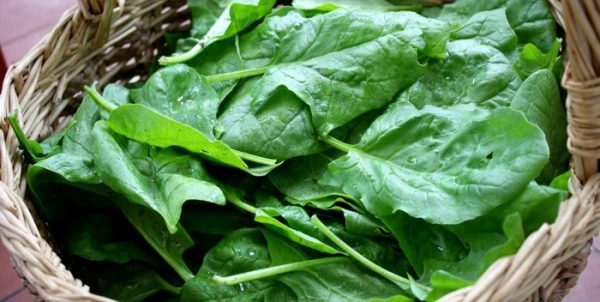
Spinach storage
There are several ways to store spinach. For short-term storage, the greens are folded into polyethylene or a damp cloth and placed in the refrigerator, while the leaves must be dry, as wet ones will quickly rot. At temperatures from 0 to +1 ° C, spinach leaves are stored for up to 10 days.
For long-term storage, spinach is frozen, dried, and canned. For freezing, both fresh herbs and blanched, or chopped to a puree state are suitable. To freeze fresh herbs, the leaves must be washed, dried, then cut, put in a bag or container, and placed in the freezer. The same can be done with blanched spinach.
For drying, greens are prepared in the same way as for freezing, only spread on paper or a baking sheet, placed in a dry, darkened place, where the drying process takes place. Many housewives practice such a harvesting method as salting or canning. In both cases, spinach retains its intense green color and beneficial properties.
Video “Tricks of planting spinach”
Informative video with useful tips for planting greens.










